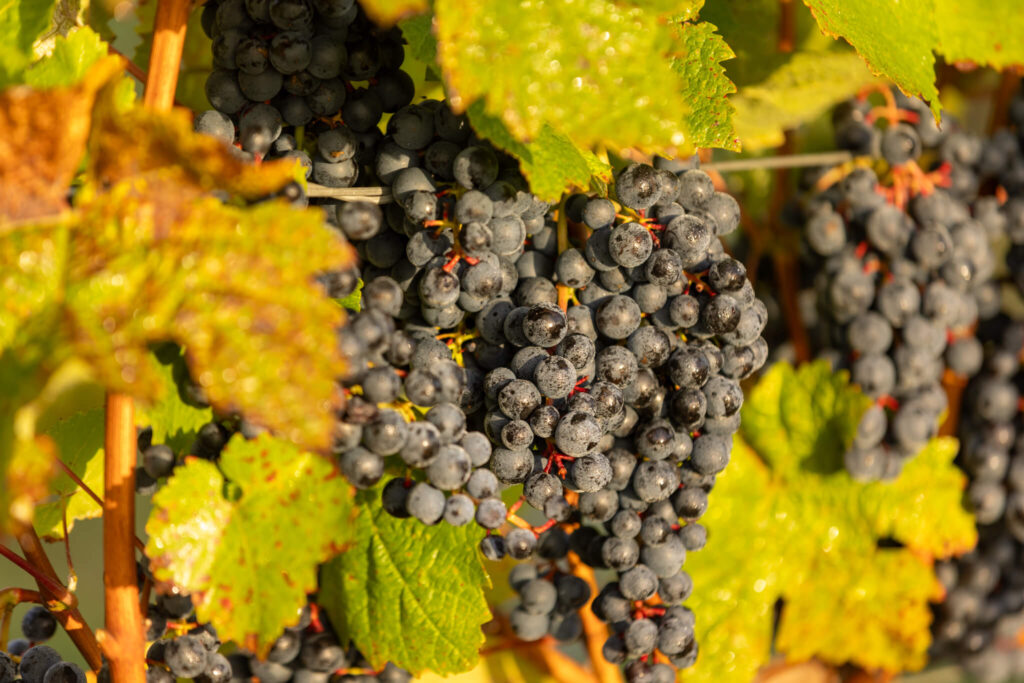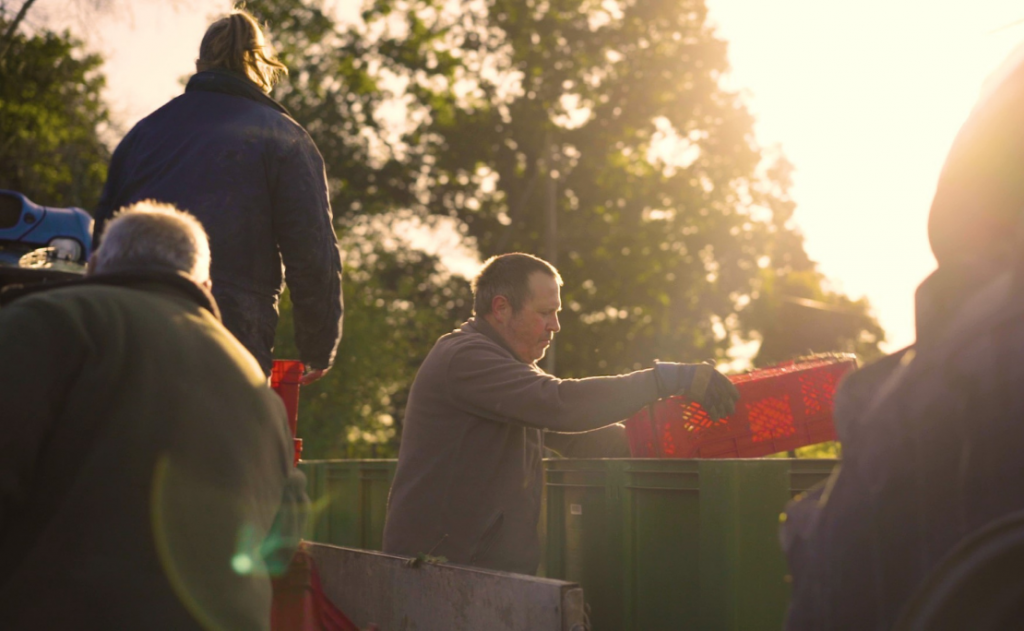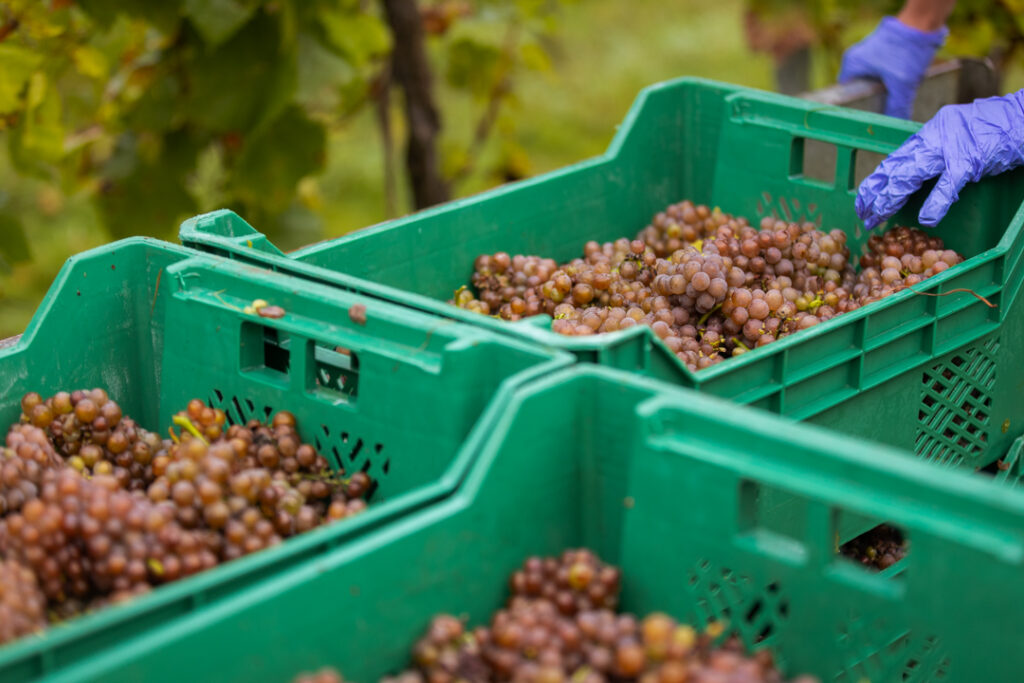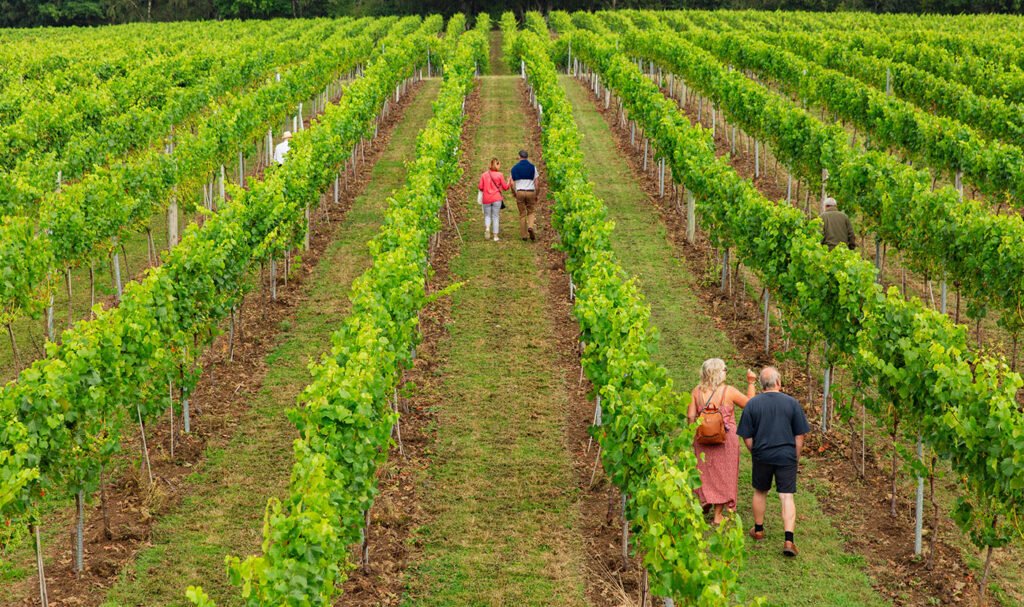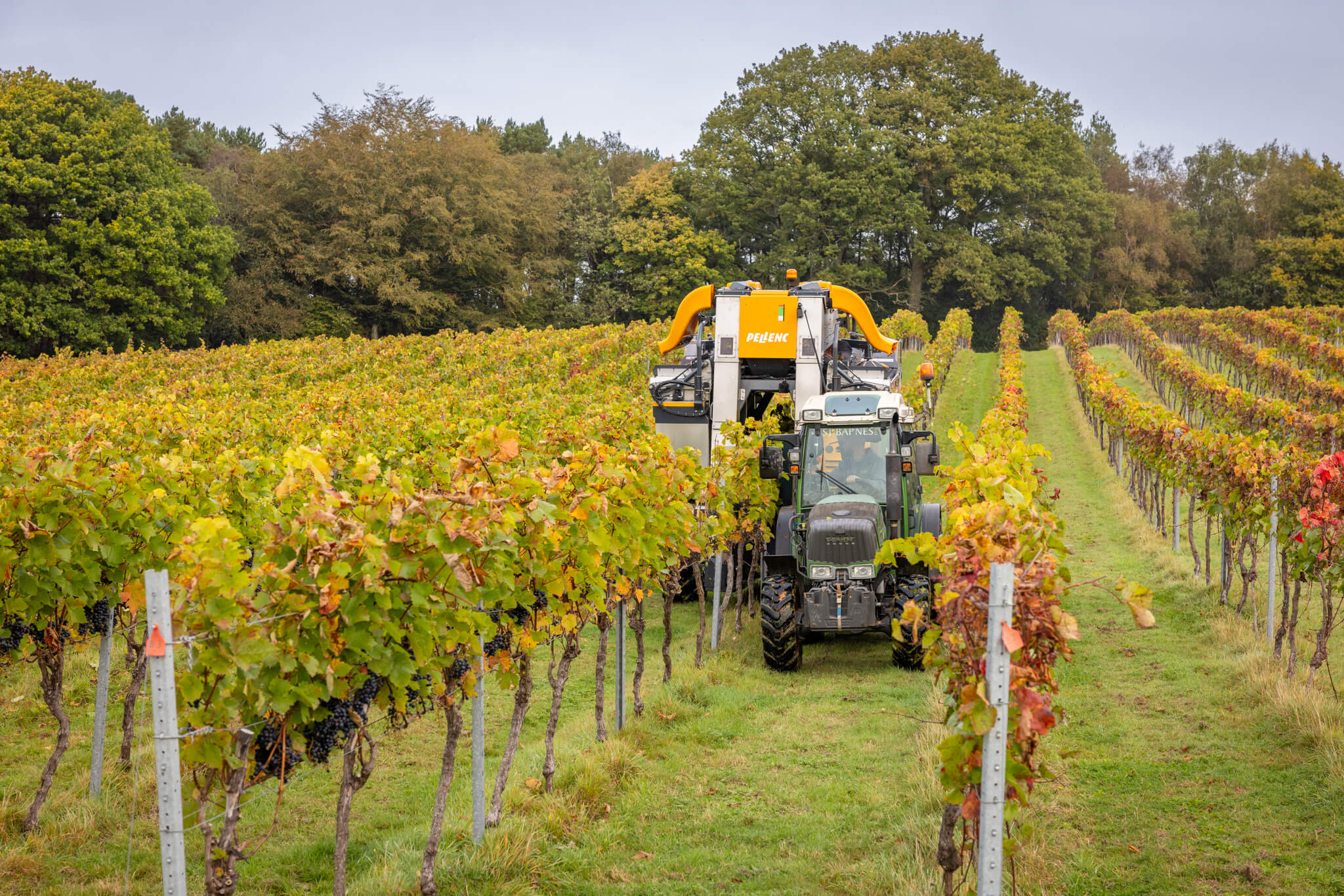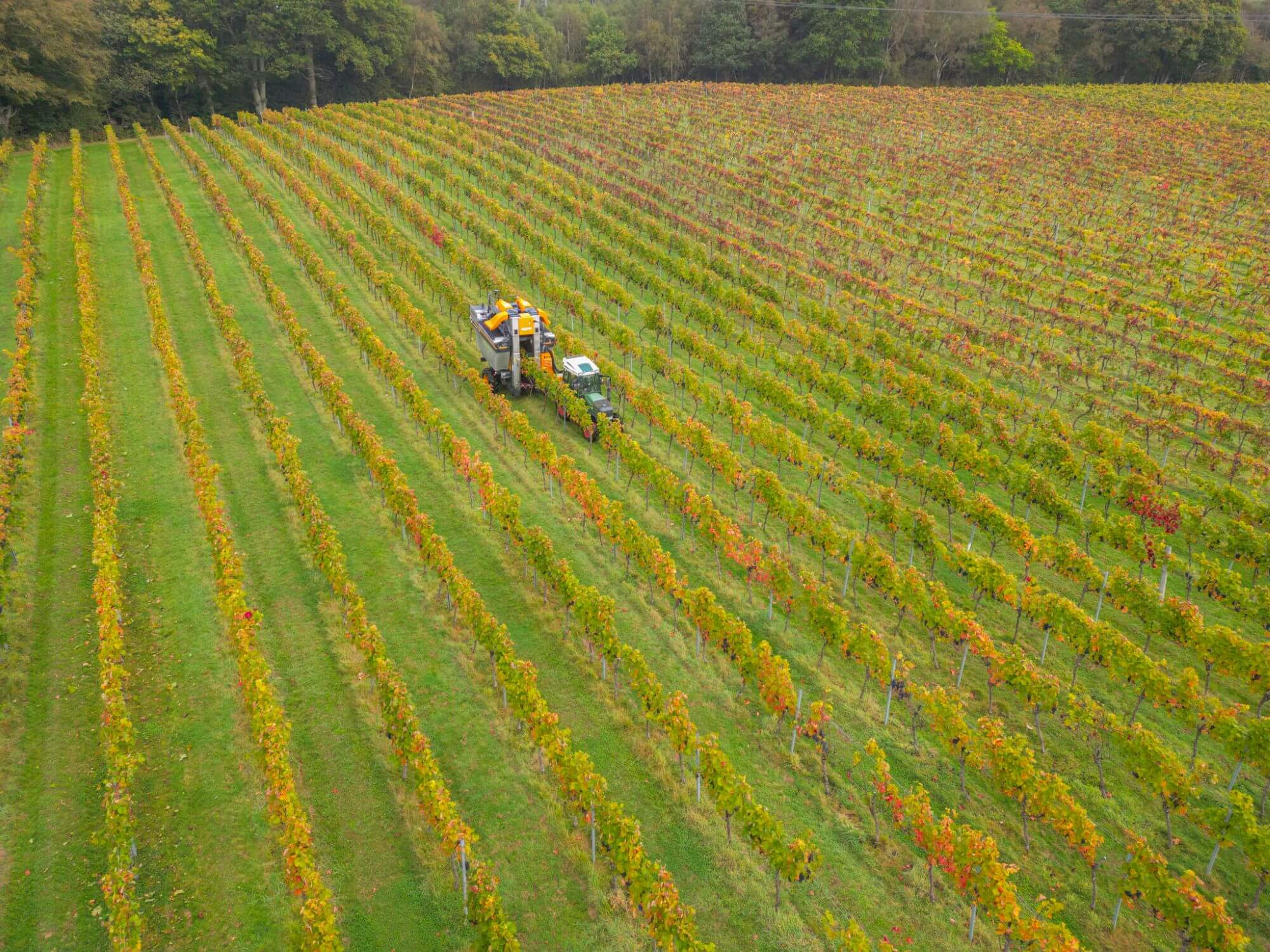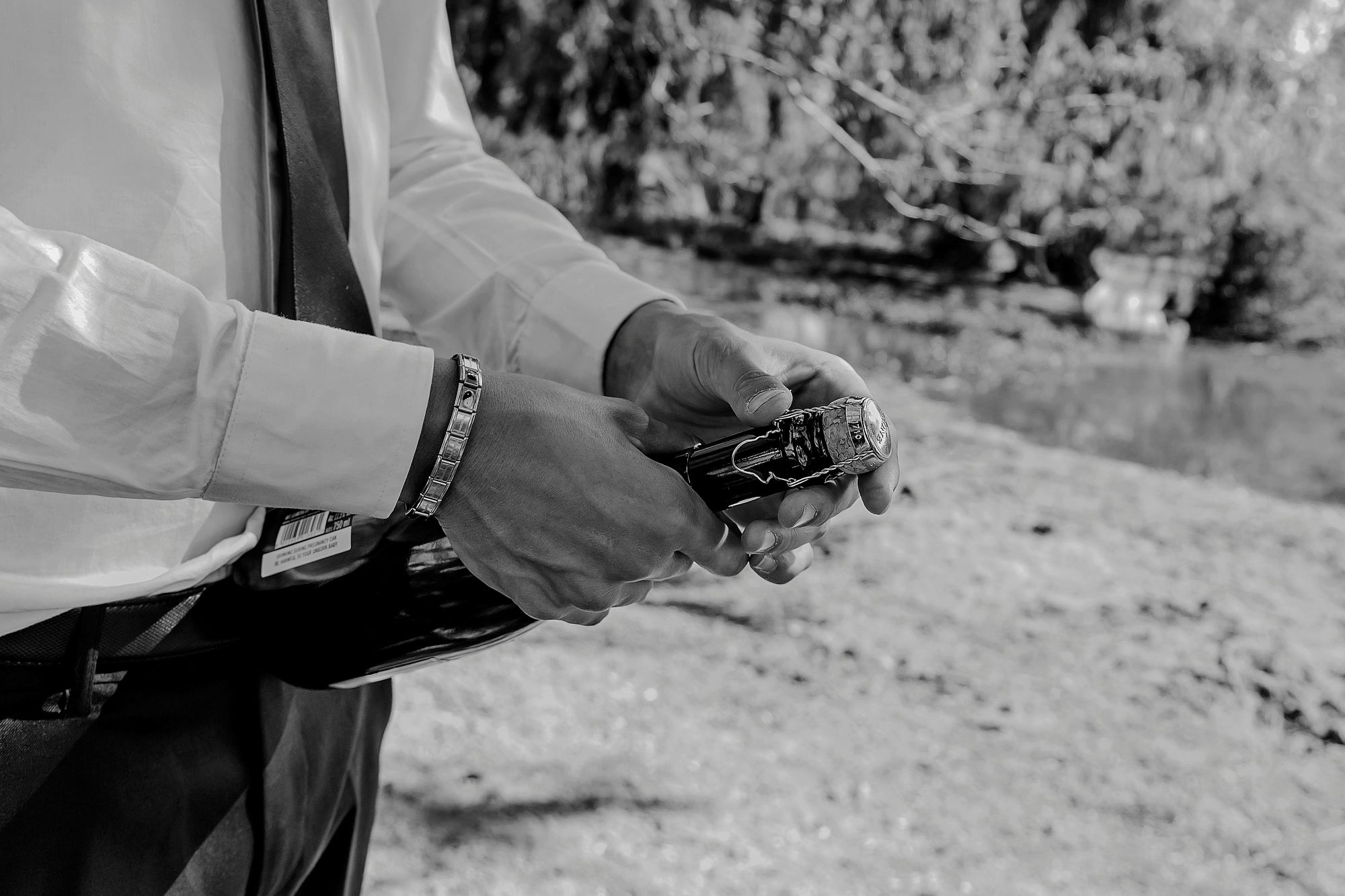Timing is everything in the world of wine, and that couldn’t be more accurate than in the vineyards of England, where the harvest is the highlight, and often the toughest part of the year.
Every bottle of wine begins with grapes, and each grape tells a story: one of weather, soil, ripening, and the risks taken along the way.
In a country that’s more associated with rain than rosé, how do winegrowers manage to hit the mark? This article explores the English wine harvest process, how it differs from that in warmer regions, and the challenges English winegrowers face.
Why is England a Challenging Place to Grow Grapes?
Unlike renowned wine regions like Bordeaux, Tuscany, or Napa Valley, England is perched right on the edge of where grapevines can thrive and produce quality wine. Most vineyards around the globe are located between 30° and 50° latitude, a band that includes France, Italy, and California. Meanwhile, England’s vineyards sit at the northernmost limit.
Thanks to our cooler climate, grapes take their time to ripen. Some years, it’s a race against the clock to achieve full ripeness before autumn brings rain, chill, or even frost. However, this slower maturation process is what gives English wines their refreshing character and crisp acidity, qualities now praised by both critics and wine lovers.
Interestingly, due to recent climate shifts, certain areas in southern England are experiencing temperatures that are just right for consistent grape growing. A study published in the Australian Journal of Grape and Wine Research found that England’s growing season is now warm enough (around 13°C) to produce high-quality sparkling and still wines.
That said, no two years are quite the same. Each year brings its own unpredictability, making the harvest here both challenging and thrilling.
When Does the English Grape Harvest Happen?
The grape harvest in England generally starts in October, but in warmer years it can begin as early as late September.
There’s no strict schedule, and it all depends on how the grapes are maturing. Winemakers constantly test and taste to see if the fruit has reached the ideal mix of sugar, acidity, and flavour, since this balance shapes the style and quality of the final wine.
Pick too soon, and the wine can end up light and sharp. Wait too long, and it may lose its freshness or start to spoil. As Britannica notes, the moment of harvest is crucial — gathering the grapes too early can produce thin, low-alcohol wines, while delaying too long can lead to richer but less balanced results.
What Makes a Good Harvest?
A perfect harvest starts in the vineyard long before the first grape is picked. Growers want fruit that is ripe, healthy, and bursting with flavour, but in England’s unpredictable climate, that’s no easy task.
A Warm, Dry Summer
Sunshine from July to September helps grapes develop sugar and flavour while keeping disease at bay. Dry conditions let the vines focus on fruit rather than battling mildew or rot. Research from Oxford University shows that warm summers and wet winters produce wines with better balance and quality.
A Gentle Shift into Autumn
When autumn arrives gradually, with calm, steady weather into early October, grapes have the time to ripen evenly. Slow maturation preserves the natural acidity that gives English wines their crisp, refreshing character and allows the flavours to develop fully.
Cool Nights, Warm Days
Warm days of 20–25°C and cool nights of 10–15°C help grapes build sugar while keeping acidity high. These temperature swings also help bring out natural flavours and aromas, key to English sparkling and still wines. Research in the Journal of Experimental Botany shows they affect the chemicals in grape skins that create high-quality wine.
Healthy Leaves and Canopies
Leaves that stay green and convert sunlight into energy show the vine has enough resources to ripen its fruit. Skilful canopy management, such as pruning and positioning shoots, supports good sunlight exposure and airflow. In turn, this leads to better grape quality and better disease prevention, according to Oregon State University.
What Can Go Wrong?
Even with careful planning, English weather can change quickly, affecting the harvest. Scientists at UK Climate Resilience note that rainfall, frost, and temperature swings are the biggest threats to English vineyards, which can turn a promising vintage into a struggle to harvest grapes at their peak.
Heavy Rainfall
Sudden downpours can cause grapes to swell, diluting the juice and dulling the flavour. Excess moisture increases the risk of splitting berries, opening the door to disease. A surprise shower late in the season can have vineyard teams scrambling, sometimes forcing them to pick before the grapes are quite ready.
Damp and Disease
Wet conditions make grapes vulnerable to mildew and Botrytis (grey rot), which can damage fruit very quickly. Botrytis grows best in humid, still air, especially after grapes start changing colour, according to Michigan State University.
Early Frost
Frost can delay grape ripening, making them taste flat and less flavorful. Even one cold night can harm many grapes and lower the amount and quality of the wine. A study in the Swiss Rhône Valley found that late spring frosts during early grape development can cause severe damage to vineyards and affect the final harvest.
How English Grapes Are Harvested
For the best wines, grapes are usually hand-picked, allowing workers to select only the healthiest bunches and handle them carefully to preserve flavour and aroma. Where many grapes ripen at once, machines gently shake the vines to collect the ripe fruit quickly. Many vineyards combine both methods: hand-picking for precision and machines for speed, ensuring grapes are harvested at the perfect moment.
Visit an English Vineyard in Sussex
You can experience the beauty of an English vineyard by visiting Bolney Estate in Sussex. Join a Tour & Tasting session to walk among the vines, learn about grape growing, and sample wines from recent vintages.
If you want to see the grape harvest in action, the best time to visit is usually late September to early October, when grapes are at peak ripeness. Any time of year, a visit shows how careful vineyard work, from pruning to ripening to harvesting, produces the fresh flavours and balance that make English wines so special.



